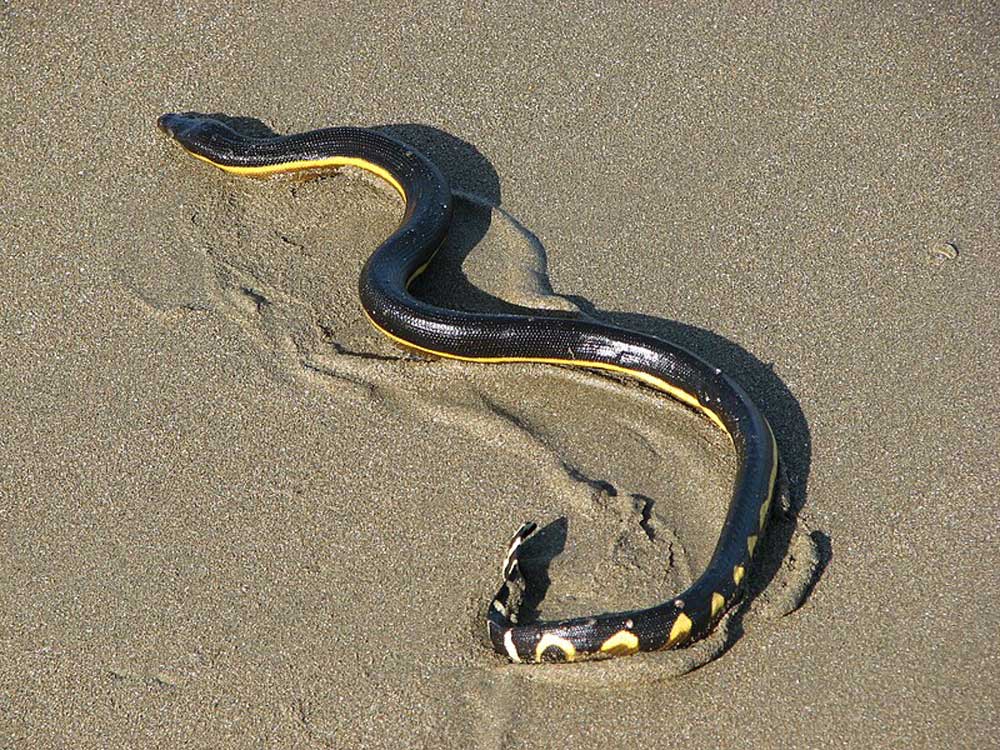The venom of the yellow-bellied sea snake causes rapid breakdown of skeletal muscle tissue. It is a very slow acting venom that initially causes headache, thirst sweating and vomiting.
A live yellow-bellied sea snake (Hydrophis platurus) was found washed up on a beach in Hilo, Hawaii, on the state’s Big Island. According to a press release put out by the Office of Josh Green, M.D., a resident of Hilo reported the live snake at Honoli’i Beach. The snake was pinned under a log. Lifeguards at the beach were able to place the snake in a 5-gallon bucket. Hawai‘i Department of Agriculture’s Plant Quarantine Branch inspectors collected the venomous snake.
Gopher Snake Found On Maui, Hawaii Euthanized
Ball Python Captured on Maui, Hawaii Coffee Farm
“We want to take this opportunity to inform the public to be wary of any snake-like reptile in or near the ocean,” Sharon Hurd, chairperson of the Hawai‘i Board of Agriculture said in the press release. “This type of sea snake can be more venomous than a cobra and potentially lethal to humans.”
The venom of the yellow-bellied sea snake causes rapid breakdown of skeletal muscle tissue. It is a very slow acting venom that initially causes headache, thirst sweating and vomiting. The tongue may feel thickened as well. The venom then can cause flaccid paralysis, drooping of the eyelids and then paralysis off voluntary muscles. The difficulty in swallowing and breathing can be fatal. In humans, the venom is myotoxic/nephrotoxic instead of neurotoxic, which is more pronounced in other elapid snakes. Humans are rarely bitten by the yellow-bellied sea snakes, and these snakes, like the vast majority of venomous snakes, would rather get away from humans than confront them, but will defend themselves when harassed.
Yellow-Bellied Sea Snake Spends As Much As Seven Months At Sea In Dehydrated State
Hawaii is home to several invasive species of lizards, including the Jackson’s chameleon, brown anole, Cuban Knight anole and the giant day gecko, among others. In fact, most lizards and amphibians in Hawaii are introduced species. The state also has no native snakes and there aren’t any known populations of invasive snakes in the state.




